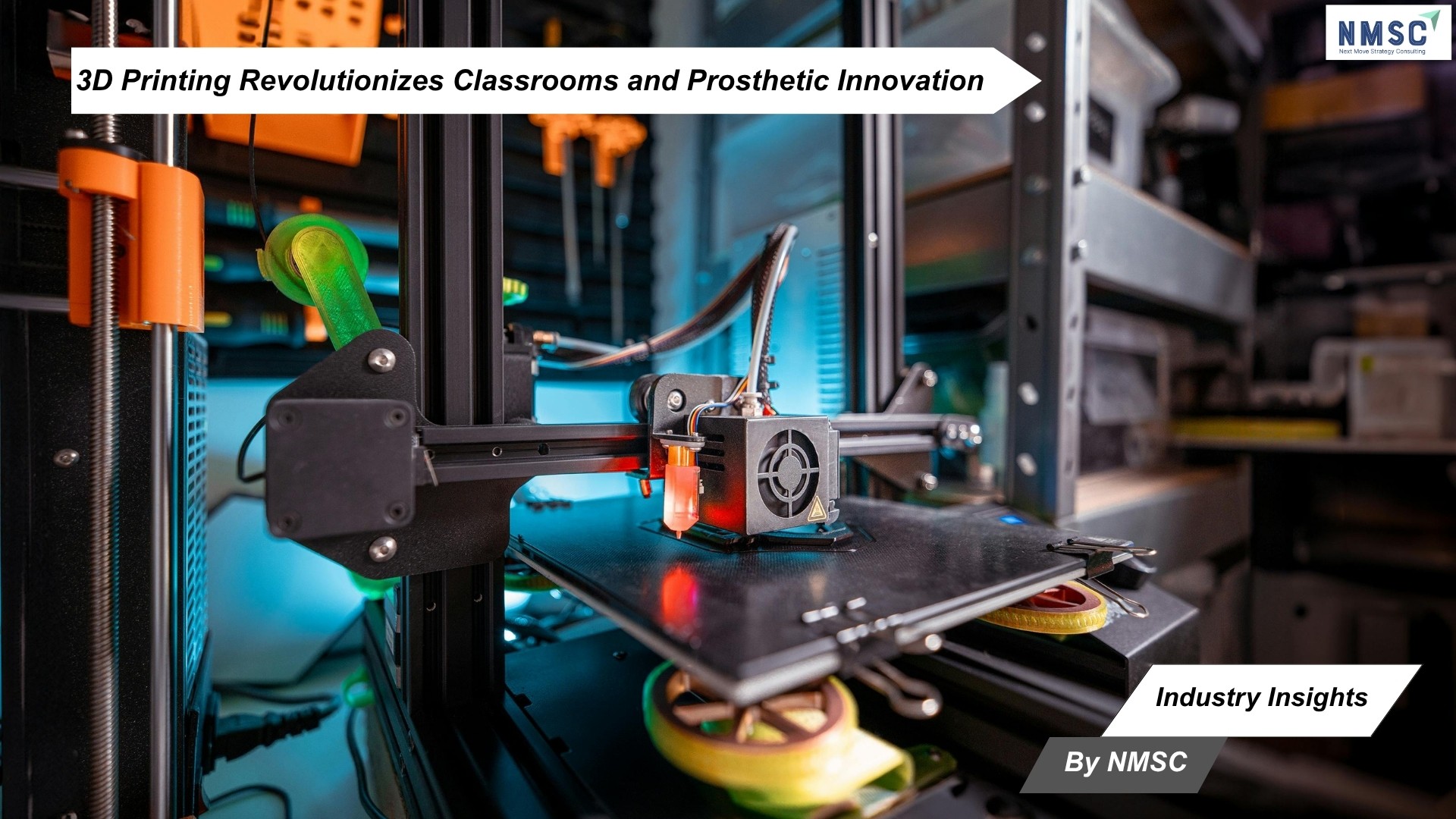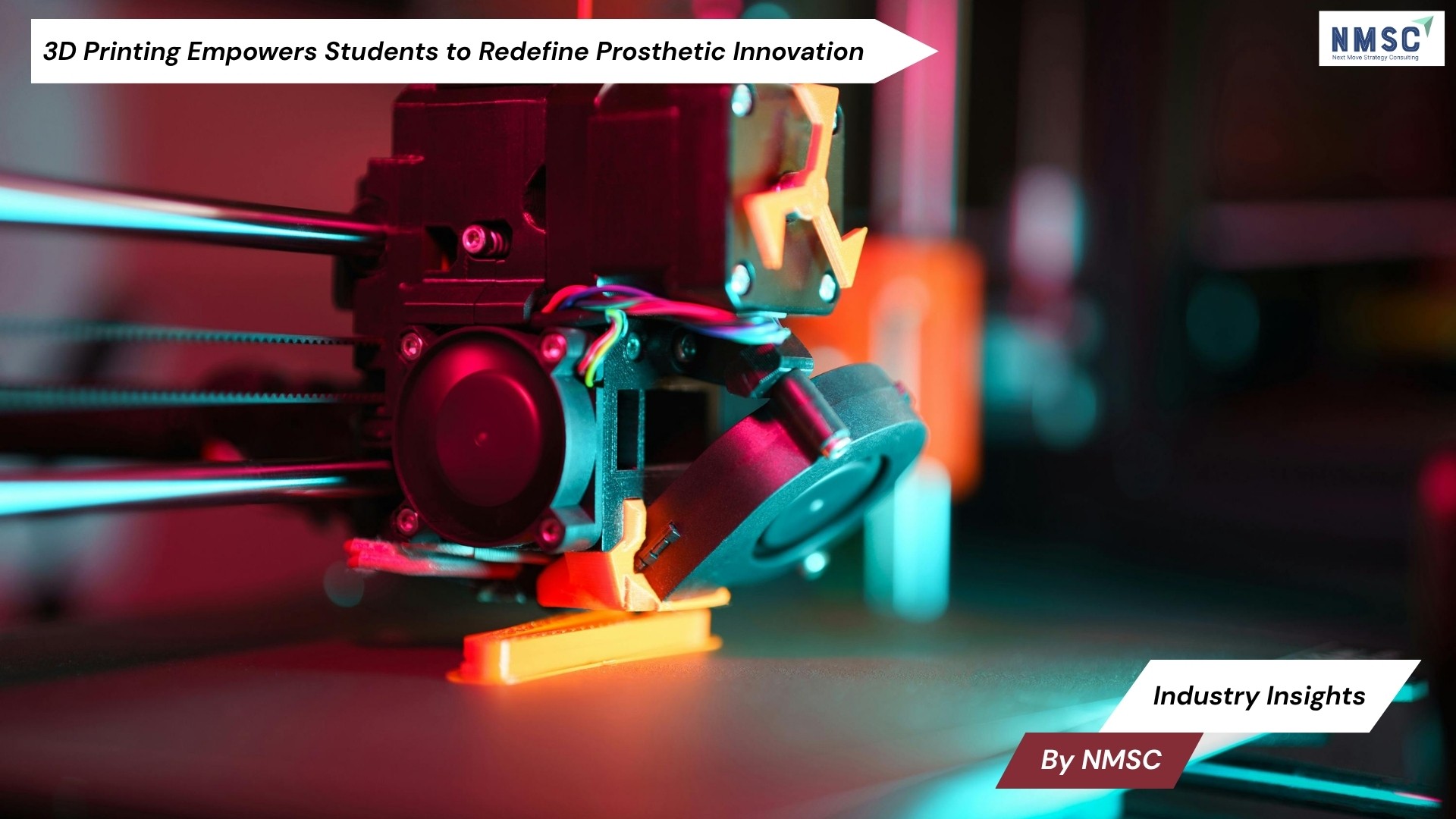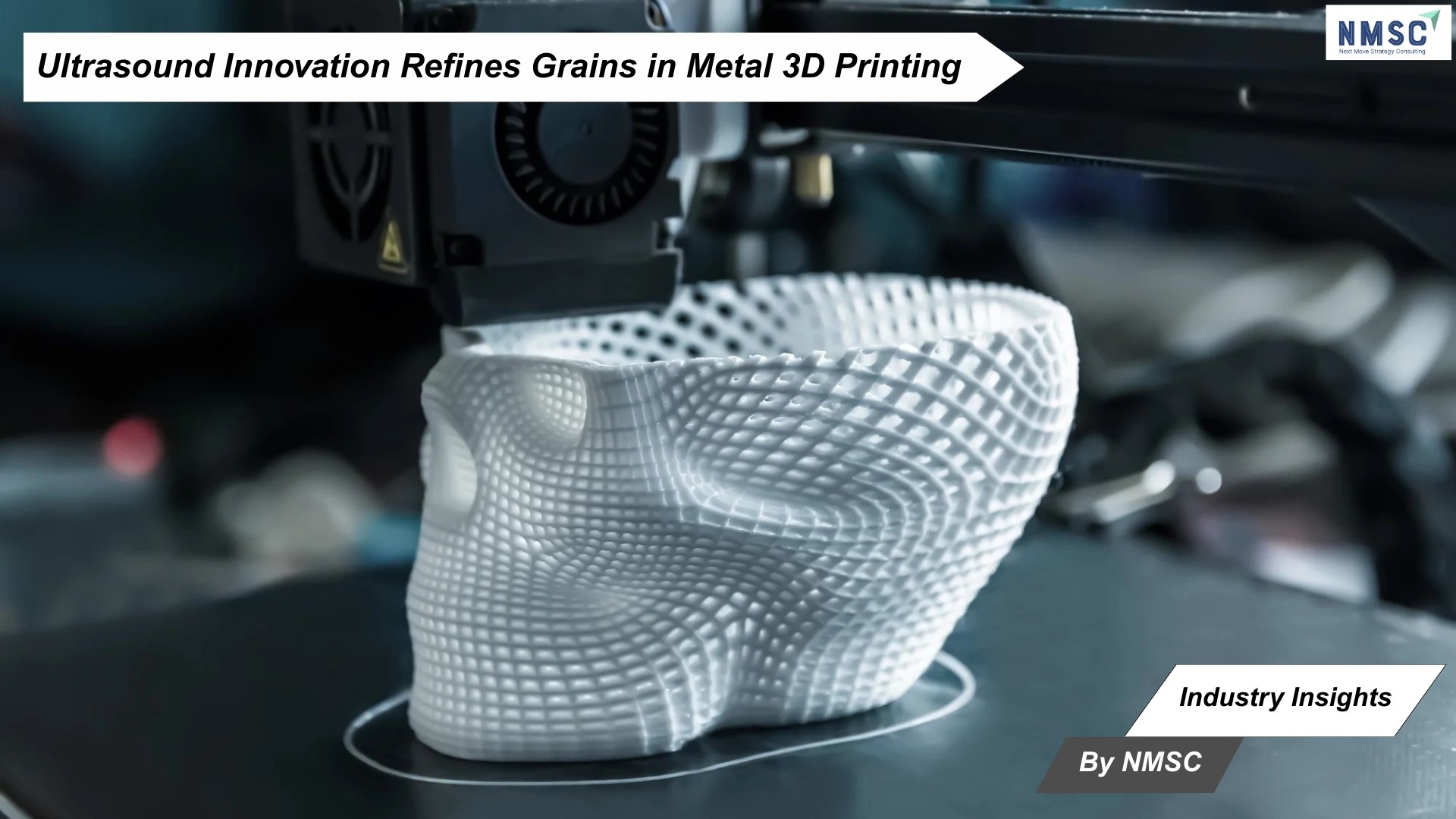3D Printing Revolutionizes Classrooms and Prosthetic Innovation
Published: 2025-10-27

Industry Insights from Next Move Strategy Consulting
As 3D printing continues to redefine what is possible in design, education, and accessibility, a recent story from Barren County, Kentucky, highlights how this technology is reshaping both classrooms and communities. A teacher’s innovative use of 3D printing not only brought science and creativity to life for his students but also changed one young boy’s daily experience in a deeply personal way.
A New Chapter in Educational Innovation
Scott Johnson, a Science, Technology, Engineering, Art, and Mathematics (STEAM) teacher at Red Cross Elementary School, has taken hands-on learning to new heights. Recognized as the 2025 Kentucky Elementary Teacher of the Year, Johnson leads a lab where over 800 students, from kindergarten to sixth grade, engage in practical applications of technology.
What began as lessons in computer-aided design (CAD) and basic printing evolved into something extraordinary when Johnson decided to create a working prosthetic hand for his student, Jackson Farmer. Jackson, who was born without a right hand, had previously worn a non-functional rubber hand for appearance. Johnson’s mission: to give him a device that could actually move and function — designed and built entirely within the school’s 3D printing lab.
Turning Classroom Technology into Real-World Impact
Using 3D printers and open-source design guidance from the E-Nable community — a global network of volunteers who produce low-cost prosthetics — Johnson spent nearly a year perfecting the prototype. Once confident in the design, he printed a full prosthetic hand using biodegradable corn plastic, completing the 25-hour printing process within the school lab.
The prosthetic is powered by a simple yet ingenious mechanism: when Jackson flexes his wrist, the fingers close, and when relaxed, the hand opens. This lightweight and power-free design cost only around $20–$30 to produce. To enhance comfort and functionality, Johnson added rubber fingertips, foam lining, and tension provided by orthodontic bands.
Jackson’s response was immediate and emotional — the hand worked perfectly, and within days, he adapted to using it for writing, holding objects, and performing everyday tasks.
3D Printing as a Gateway to Lifelong Learning
Beyond this single project, Red Cross Elementary’s 3D printing initiative has become a model for experiential learning. Johnson’s lab now houses 11 printers, funded through a combination of school budgets and grants. Students design their own models, learn to troubleshoot printing errors, and develop multi-year portfolios that grow in complexity from second to sixth grade.
Projects range from creative gifts and educational tools to community-driven efforts, such as designing slow-feeder bowls for local animal shelters or tactile plates for visually impaired students. Through these projects, students gain confidence, problem-solving abilities, and exposure to engineering concepts — all while learning the value of teamwork and innovation.
Every print is made using eco-friendly corn plastic derived from plant starch, connecting technology with lessons in sustainability and agriculture. Students leave the program with up to five years of CAD experience, preparing them for advanced technical education and emerging career paths in engineering, design, and manufacturing.
A Vision Aligned with “United We Learn”
The success of Johnson’s program reflects the pillars of Kentucky’s “United We Learn” educational vision — promoting vibrant learning experiences, fostering innovation, and encouraging community collaboration. Each project in the lab allows students to merge creativity with critical thinking, building a foundation for innovation that extends beyond the classroom.
Jackson’s story exemplifies the tangible outcomes of this vision: a young student empowered through technology, a teacher transforming education through ingenuity, and a school redefining the boundaries of what learning can achieve.
Next Move Strategy Consulting’s View
According to insights from Next Move Strategy Consulting, the 3D printing market is experiencing rapid adoption across multiple sectors, with education emerging as one of its most promising fields. The technology’s ability to merge creativity, accessibility, and affordability is driving a new wave of transformation in how institutions approach hands-on learning and real-world application.
From producing cost-effective prosthetics to introducing young learners to engineering principles, 3D printing is proving to be a catalyst for social and educational innovation. As this technology continues to evolve, its role in shaping future-ready classrooms and inclusive design solutions will only deepen.
3D printing is no longer just a manufacturing tool — it is a bridge between imagination and impact, empowering educators, students, and innovators to turn ideas into tangible change.
Source: NewsBreak
Prepared by: Next Move Strategy Consulting
About the Author
 Tania Dey is a highly experienced Content Writer and a passionate SEO Executive with a specialized focus on digital transformation, technology trends, and industry-focused insights. She has honed her expertise in creating compelling, data-driven content that not only enhances online visibility but also aligns with the ever-evolving demands of modern business landscapes. Her work spans a diverse range of industries, including technology, and digital services, enabling organizations to communicate their vision and value propositions effectively to both niches.
Tania Dey is a highly experienced Content Writer and a passionate SEO Executive with a specialized focus on digital transformation, technology trends, and industry-focused insights. She has honed her expertise in creating compelling, data-driven content that not only enhances online visibility but also aligns with the ever-evolving demands of modern business landscapes. Her work spans a diverse range of industries, including technology, and digital services, enabling organizations to communicate their vision and value propositions effectively to both niches.
About the Reviewer
 Debashree Dey is a versatile Content Writer, PR Specialist, and Assistant Manager in Digital Marketing, known for her ability to craft audience-focused narratives and develop data-driven strategies that enhance brand visibility. As a published manuscript author, she combines creativity
with strategic acumen to help brands strengthen their presence and drive deeper user engagement. Outside of her professional pursuits, Debashree draws inspiration from creative projects and design explorations.
Debashree Dey is a versatile Content Writer, PR Specialist, and Assistant Manager in Digital Marketing, known for her ability to craft audience-focused narratives and develop data-driven strategies that enhance brand visibility. As a published manuscript author, she combines creativity
with strategic acumen to help brands strengthen their presence and drive deeper user engagement. Outside of her professional pursuits, Debashree draws inspiration from creative projects and design explorations.
















Add Comment